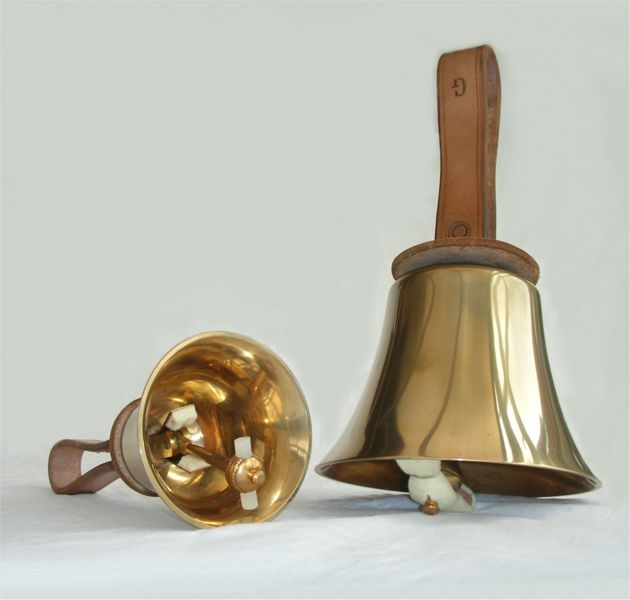The Five Crowns For Dinner
Going to the Five Crowns for dinner has been or tradition for years.
The Five Crowns is in Corona del Mar. Corona del Mar (Spanish for "Crown of the Sea") is a neighborhood in
Newport Beach, California. It generally consists of all land on the
seaward face of the San Joaquin Hills south of Avocado Street to the
city limits, as well as the development of Irvine Terrace, just north of
Avocado. Immediately south of Corona del Mar is Crystal Cove State Park,
an expanse of beach accessible by paths winding down a steep hillside.
Settled early in the 20th century, the older area of Corona del Mar
consists mostly of closely-spaced, free-standing, detached single family
houses of varying architecture, concentrated along Pacific Coast Highway
(also known as "PCH" or California State Route 1). Newer developments in
Harbor View Hills consist of California ranch style houses, many with
expansive ocean views.

 A
handbell is a bell designed to be rung by hand. To ring a handbell, a
ringer grasps the bell by its slightly flexible handle — traditionally
made of leather, but often now made of plastic — and moves the wrist to
make the hinged clapper inside the bell strike. An individual handbell
can be used simply as a signal to catch people's attention or summon
them together, but handbells are generally heard in tuned sets.
A
handbell is a bell designed to be rung by hand. To ring a handbell, a
ringer grasps the bell by its slightly flexible handle — traditionally
made of leather, but often now made of plastic — and moves the wrist to
make the hinged clapper inside the bell strike. An individual handbell
can be used simply as a signal to catch people's attention or summon
them together, but handbells are generally heard in tuned sets.
The bells used in American handbell choirs are almost always English
handbells. "English handbells" is a reference to a specific type of
handbells, not to the country of origin. While some American handbell
choirs do use bells made in England, a large majority play bells made
either by Malmark Bellcraftsmen or by Schulmerich Carillons, both based
in Pennsylvania.
The two major defining characteristics of English handbells are their
clappers and overtones. The clapper on an English handbell is on a hinge
and moves back and forth in a single direction, unlike a school bell in
which the clapper swings freely in any direction. It also has a spring
which holds the clapper away from the casting after the strike to allow
the bell to ring freely.




>



Zack drove Grandpa and Grandma home... Too many celebrations




